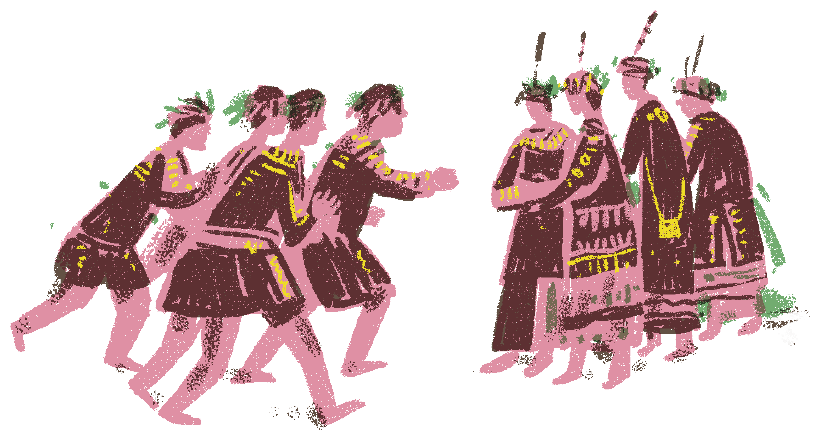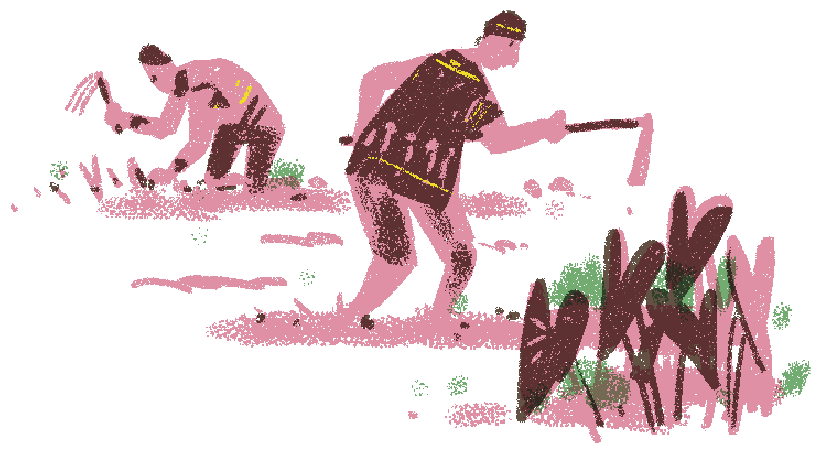Being single is lonely, but simply dreaming for a partner and happiness and not doing anything about it is not going to change your situation. Back in the early days, indigenous societies had different customs for courtship and marriage, and some of these practices have been fully preserved to this day. Want to have an unforgettable romance? Follow the footsteps of our indigenous friends !

 Catching Your Attention: Choose Me !
Catching Your Attention: Choose Me !
Unlike Non-indigenous people’s marriages, which were traditionally arranged by parents or matchmakers, many indigenous communities allowed their youth to date freely. But how do you attract the attention of your sweetheart? If you have a strong body and outstanding hunting skills, or if you are an excellent weaver or singer, you already have a head start!
 Professing My Love: is He/She Interested in Me?
Professing My Love: is He/She Interested in Me?
I have been courting my beloved for a while yet I still don't know if she/he is interested in me. It’s driving me mad! This is when a token of love can ease the mind of an anxious suitor.
 Leaving ljiva
Leaving ljiva 
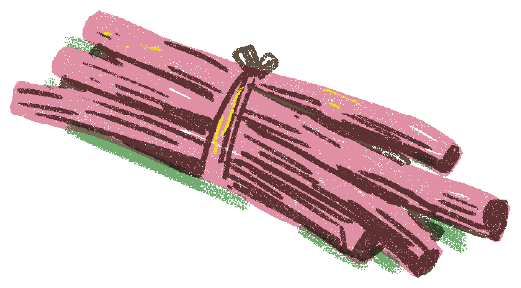 Paiwan young men would go into the mountains late at night and chop wood that makes good coal, usually tropical crepe myrtle, linen hibiscus, or Taiwan acacia. Then they would place the wood at the doorstep of the girl’s house to show their affection. Girls would also compete with each other to see who has the most ljiva at her door.
Paiwan young men would go into the mountains late at night and chop wood that makes good coal, usually tropical crepe myrtle, linen hibiscus, or Taiwan acacia. Then they would place the wood at the doorstep of the girl’s house to show their affection. Girls would also compete with each other to see who has the most ljiva at her door.

 Putting Betel Nuts into His alofo
Putting Betel Nuts into His alofo 
For Pangcah ladies who take the initiative, they would give the young man they fancy an alofo, or put betel nuts in the young man’s alofo during annual festivals. If the young man is also interested, he will respond by eating the betel nuts. Keep in mind the way the alofo is worn carry different meanings: normally the strap would be on the right shoulder and the pouch would sit on the left hip (the opposite side would indicate the wearer is in mourning). If the wearer is already seeing someone, he would shorten the strap with a knot to indicate he is taken.
 Perseverance Wins the Race - and the Girl
Perseverance Wins the Race - and the Girl
Even after the couple is finally together, they still have to overcome many challenges in order to start their own family.
Even though young couples were allowed to date freely, most of the time parents still had the final say in marriage. Especially in patriarchal societies, “bridenapping” would occur occasionally when the marriage is dominated by the bride’s parents or the parents do not agree to the marriage. However, grabbing the girl does not mean she is yours. The groom-to-be still has to go through many challenges and trials to eventually marry his beloved.
Young couples also need to pass the future in-laws’ evaluations to get married. For example, Tsou and Truku communities require the young man to work at the bride’s house for a period of time before the actual wedding. In some societies, this is an alternative betrothal gift; in others, it is a test to see the potential groom’s work capabilities. This trial period may vary from a few weeks to a couple of years.
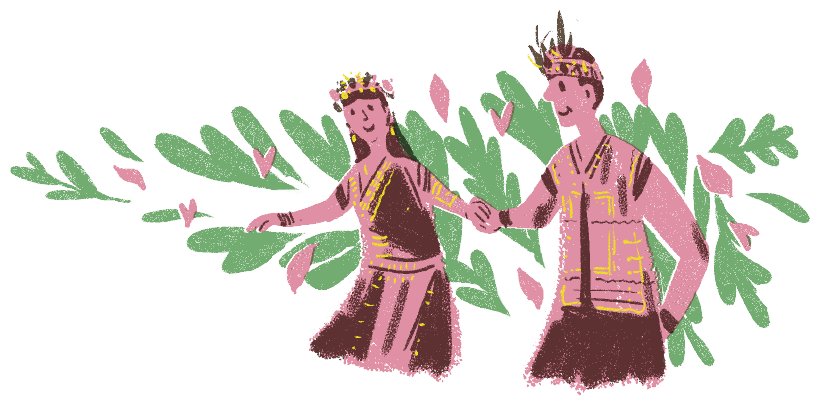
 We're Getting Married !
We're Getting Married !
A wedding is not just the couple’s affair, the entire village is here to help out! In traditional indigenous culture, marriage is a very important milestone in life. Different communities each have their unique set of beliefs and rules to follow to ensure a happy married life and pleasant new household. The bride and groom show their sincerity and devotion to their partner and this marriage through betrothal gifts (bunches of millet, rice cakes, betel nuts, large pots, the essential whole pig, and others) and rituals such as paying respect to the ancestors, carrying the sedan, carrying the bride on his back, the wedding and feasting. When there is a wedding in the house, the generous indigenous peoples are more than happy to invite the entire village to come celebrate and give the newlyweds blessings.
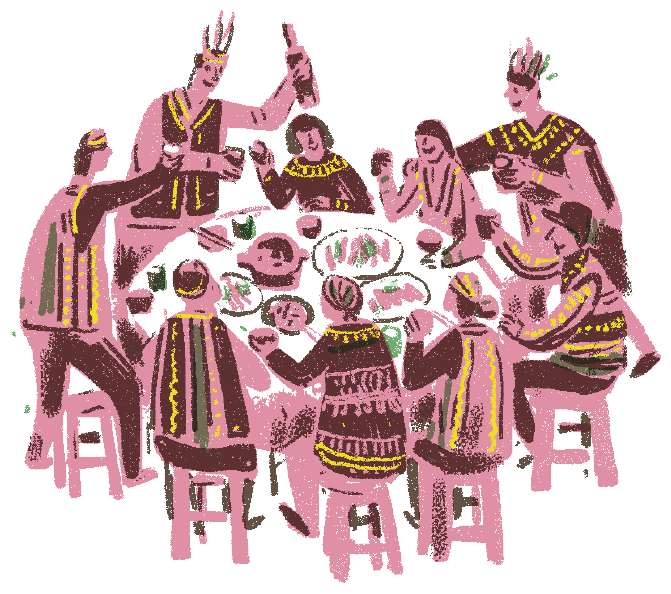

To encourage young couples to get married and start families, Alishan Township Office has been hosting the Fo’na Bean Festival since 2002. Interestingly, traditional Tsou weddings once had a “Fo’na Rite”. Traditionally, the sexual prowess of a man was also an indicator of his abilities. In early Tsou weddings, they would let the bride lie down completely naked, and cover her body with fo’na bean flowers. The groom will then flick off the blossoms one by one with his penis. The entire process would be witnessed by family from both sides.
In a modern society where gender equality is valued, this type of custom which sexualizes the female body and ignores sexual autonomy has been abandoned. Moving forward from a male-dominated society, we need to reflect on the past and create a more gender-equal environment.
Reference: Avaei‧Vavayanan shares traditional wedding cultures of the Tsou People. (2020, May 2) | Interviewed by: Chen Yi-Ru, Kuo Po-Jiun.


